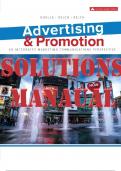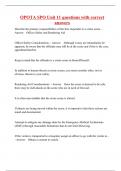Exam (elaborations)
SOLUTIONS MANUAL for Advertising & Promotion 7th Canadian Edition by Michael Guolla. ISBN-10 : 1260060411. (Complete 19 Chapters)
- Institution
- Advertising & Promotion 7th Canadian Edition
SOLUTIONS MANUAL for Advertising & Promotion 7th Canadian Edition by Michael Guolla. ISBN-10 : 1. 19 Chapters (Complete Download). TABLE OF CONTENTS: Part 1 Understanding Integrated Marke ting Communications CHAPTER 1 Integrated Marketing Communications CHAPTER 2 Organizing for IMC: Role of Agencie...
[Show more]




